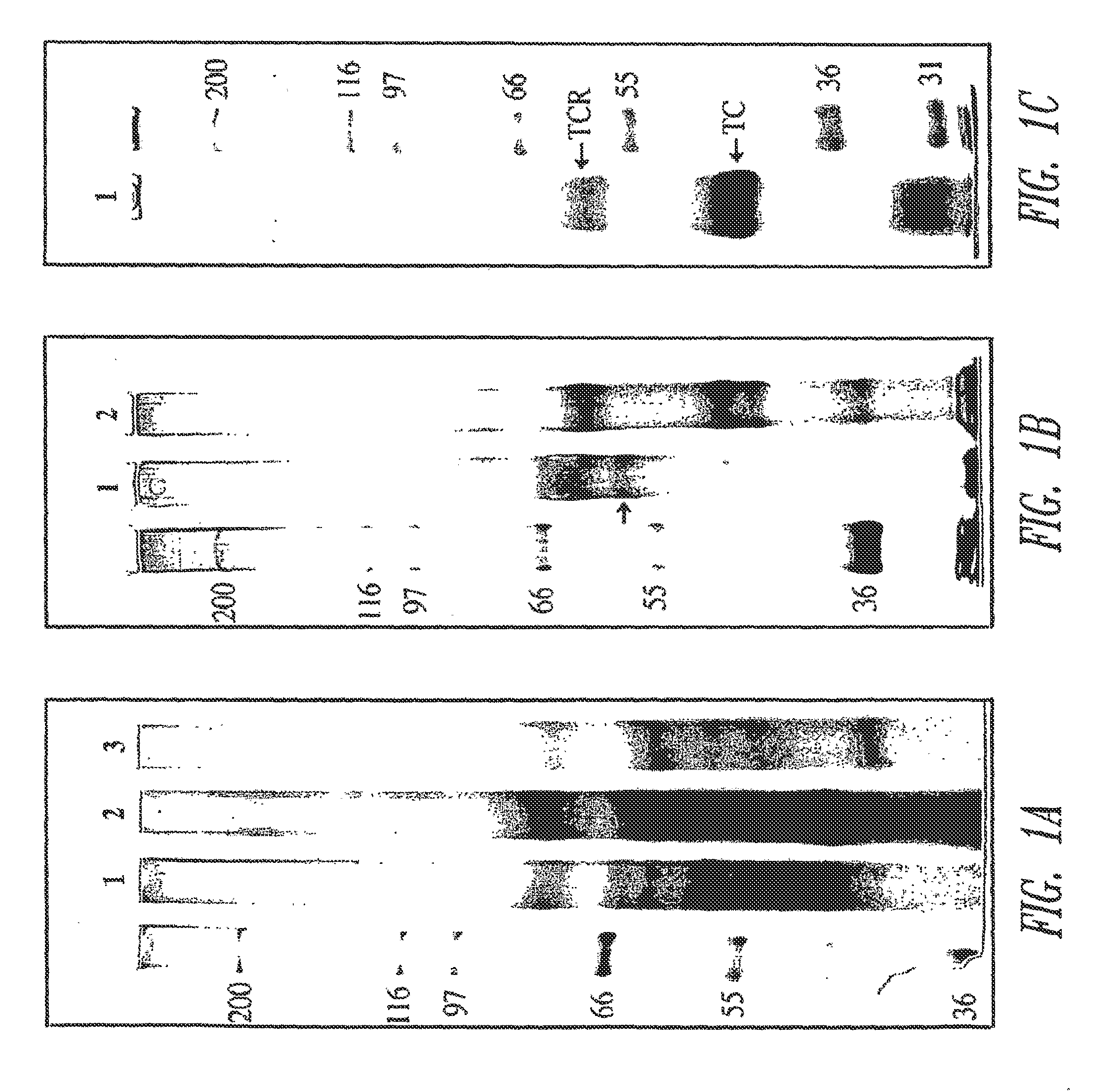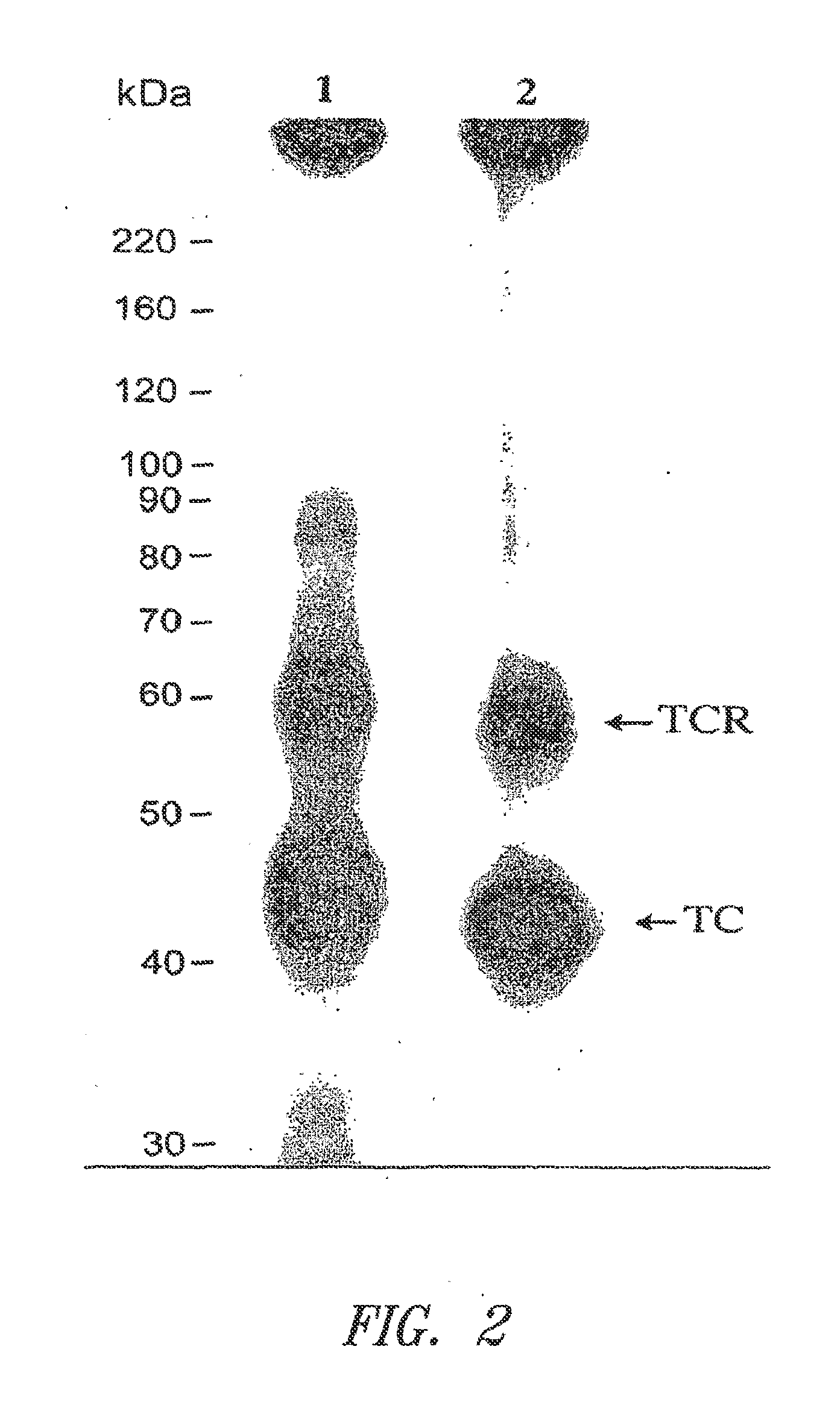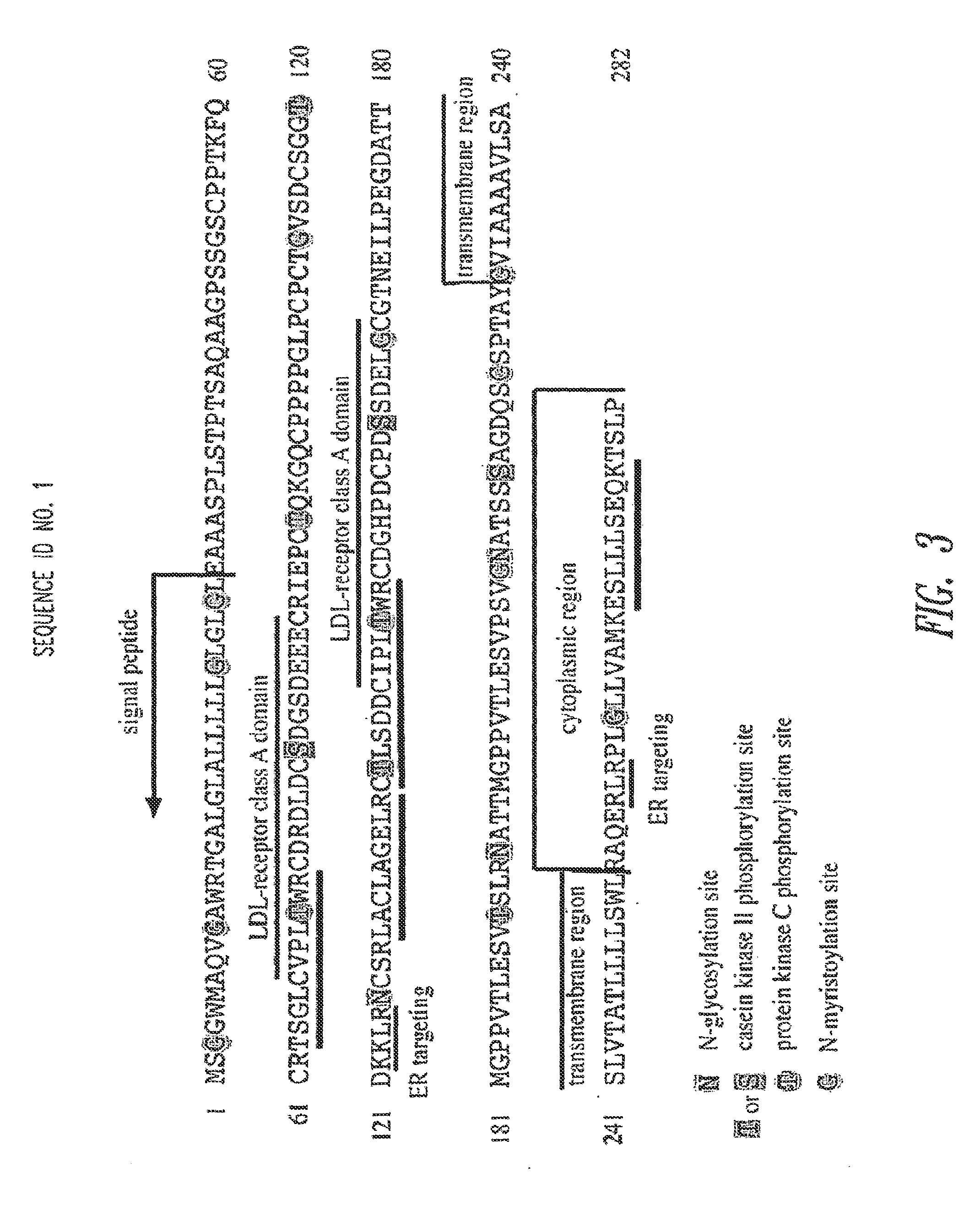Transcobalamin receptor polypeptides, nucleic acids, and modulators thereof, and related methods of use in modulating cell growth and treating cancer and cobalamin deficiency
a technology of cobalamin receptor and polypeptide, which is applied in the field of transcobalamin receptor polypeptides and polynucleotides, can solve the problems of inability to accurately report amino acid and carbohydrate analyses, inability to provide information about the source of tc in vivo, and inability to induce tc synthesis by liver cells, etc., to achieve the effect of reducing the uptake of transcobalamin
- Summary
- Abstract
- Description
- Claims
- Application Information
AI Technical Summary
Benefits of technology
Problems solved by technology
Method used
Image
Examples
example 1
Purification and Characterization of the Transcobalamin Receptor
[0313]This example describes the purification and characterization of the TCblR protein.
Purification of TCblR
[0314]The initial protocol for the preparation of placental membranes, solubilization of TCblR and affinity purification was based on the original procedure of Seligman and Allen except for the use of aminopropyl-Cbl coupled to Sephacryl or Emphaze matrix on which rabbit TC was immobilized. This purification yielded a product that was only 25% pure based on functional activity and multiple protein bands were identified by LC-MS in the region corresponding to the expected size of TCblR when separated by SDS-PAGE and stained with Coomassie blue.
[0315]A facile functional assay to monitor the TC-Cbl binding activity of TCblR proved very useful to follow the progress during purification. This assay utilized either wheat germ agglutinin (WGA) or concanavalin A (Con A)-agarose to bind TCblR. This method takes advantage ...
example 2
Identification and Characterization of the Transcobalamin Receptor cDNA and Gene
[0328]A search of the human genome data bank revealed the complete gene sequence and chromosomal localization of the human TCblR gene (FIG. 5). The cDNA sequence of human TCblR is provided in SEQ ID NO:2.
Identification of Cis Genomic Elements that Regulate TCblR Expression
[0329]Since TCblR expression is regulated with maximum expression in actively dividing cells, this differential expression is used to characterize transcriptional regulation of this gene and to identify trans-active factors involved in this regulation. Studies on the level of TCblR transcript and protein expression in various primary cell lines such as peripheral skin fibroblasts, venous endothelial cells and in malignant cells such as K562, HL 60 and ECV 304 provide information on the precise time frame for high- or low-TCblR expression and TCblR expression throughout the cell cycle.
[0330]The regulation of TCblR expression is analyzed ...
example 3
Characterization of Transcobalamin Receptor Expression in Human Tissues
[0345]The availability of gene probes and antiserum to TCblR facilitate direct identification of the TCblR mRNA transcript and protein in tissue sections, respectively, by in situ hybridization and immunohistochemistry.
[0346]The techniques for both procedures are well established. Polyclonal antiserum specific for TCblR was obtained from R&D Systems (goat anti-human 8D6 polyclonal antibody; Minneapolis, Minn.). The polyclonal antiserum to TCblR reacts well in immunohistochemical analysis as shown in FIG. 18. NIH IMAGE software and a phosphor-imager were used to quantify the autoradiographic signal, or the fluorescence signal intensity in tissue sections.
[0347]Tissues for these analyses are obtained from commercial sources for tissue arrays because these have been collected under controlled conditions and tested for integrity of proteins and mRNA using specific markers. The utility of tissue microarrays in normal ...
PUM
| Property | Measurement | Unit |
|---|---|---|
| half life | aaaaa | aaaaa |
| pH | aaaaa | aaaaa |
| temperature | aaaaa | aaaaa |
Abstract
Description
Claims
Application Information
 Login to View More
Login to View More - R&D
- Intellectual Property
- Life Sciences
- Materials
- Tech Scout
- Unparalleled Data Quality
- Higher Quality Content
- 60% Fewer Hallucinations
Browse by: Latest US Patents, China's latest patents, Technical Efficacy Thesaurus, Application Domain, Technology Topic, Popular Technical Reports.
© 2025 PatSnap. All rights reserved.Legal|Privacy policy|Modern Slavery Act Transparency Statement|Sitemap|About US| Contact US: help@patsnap.com



